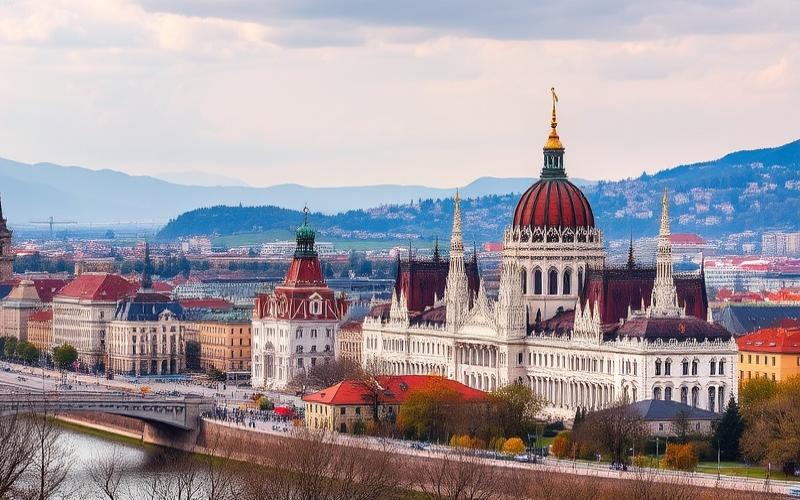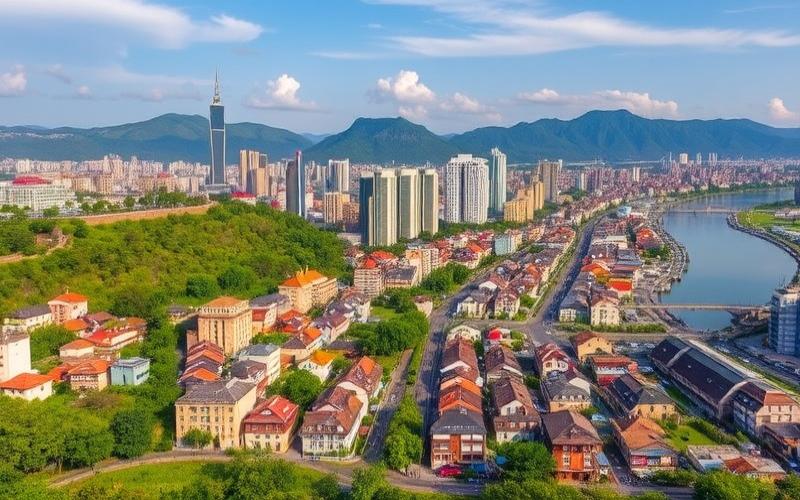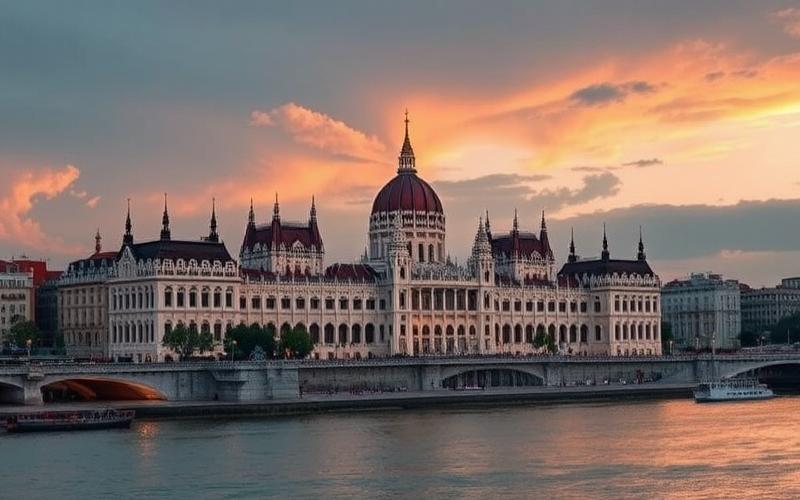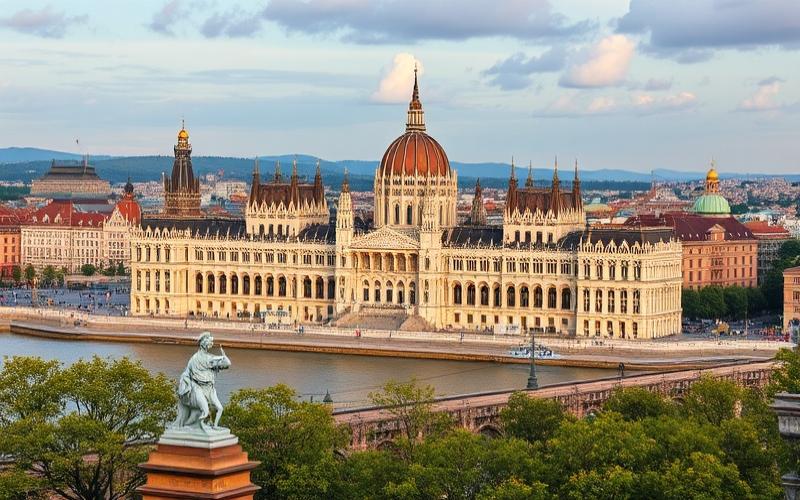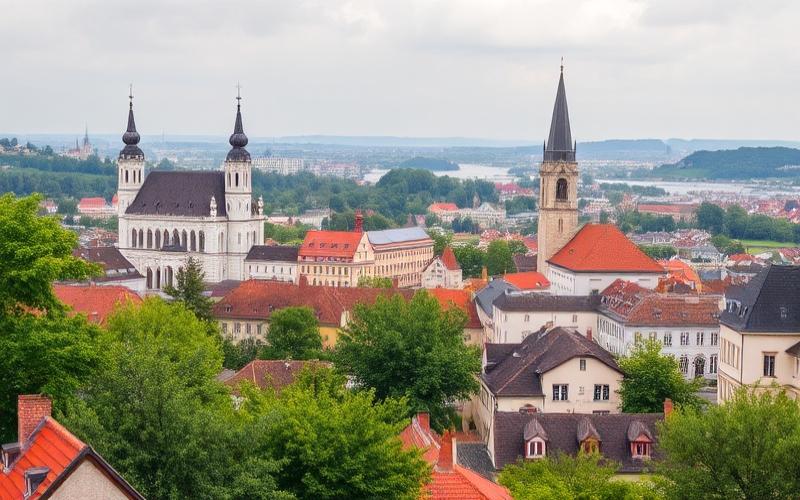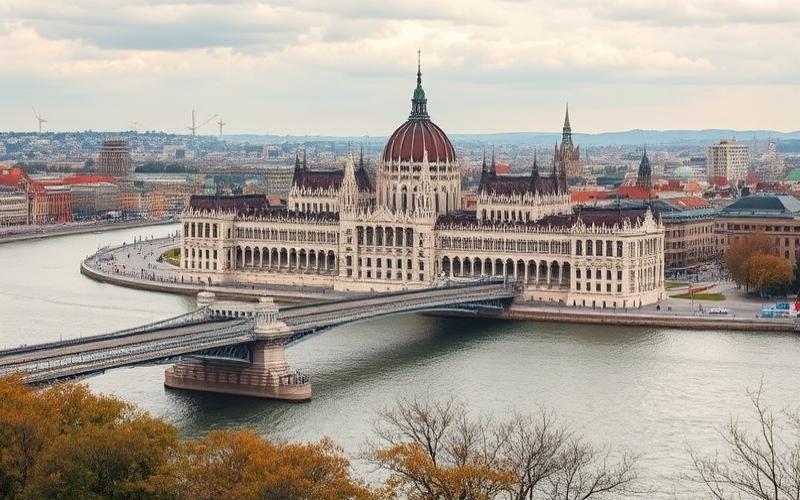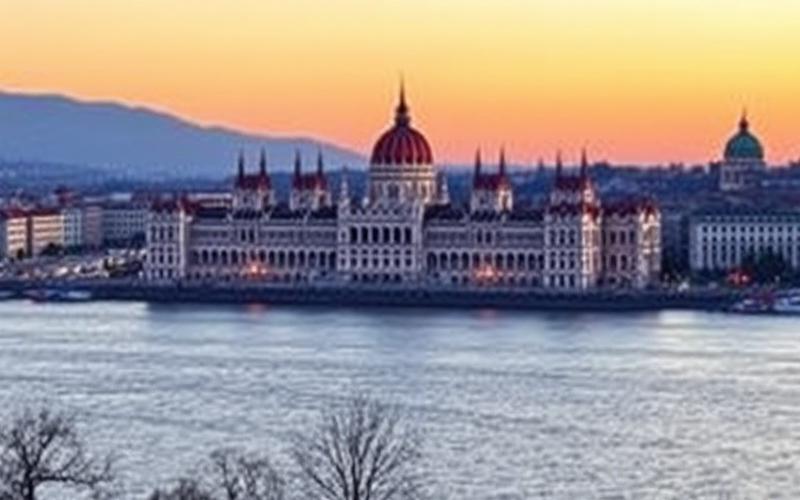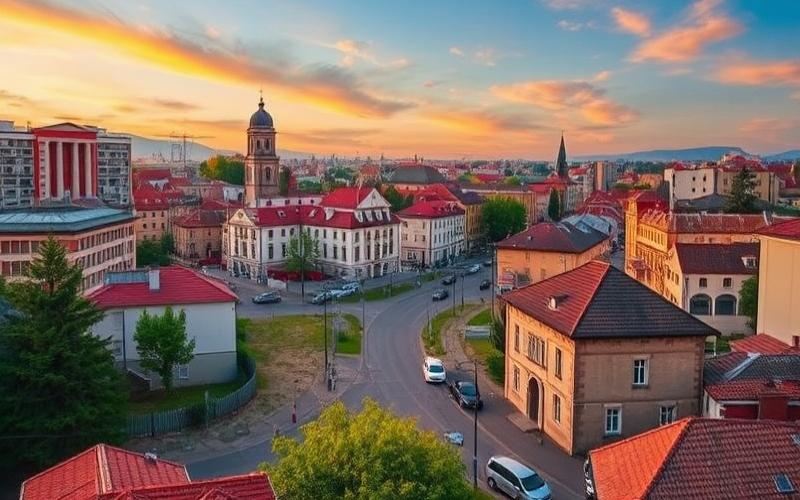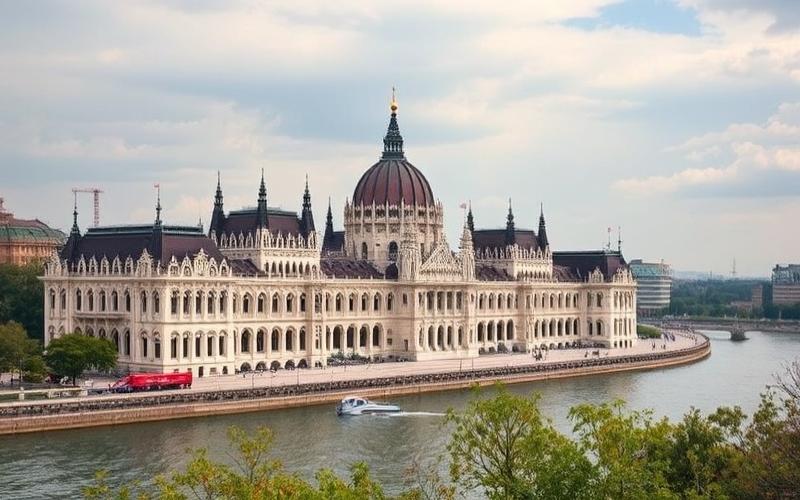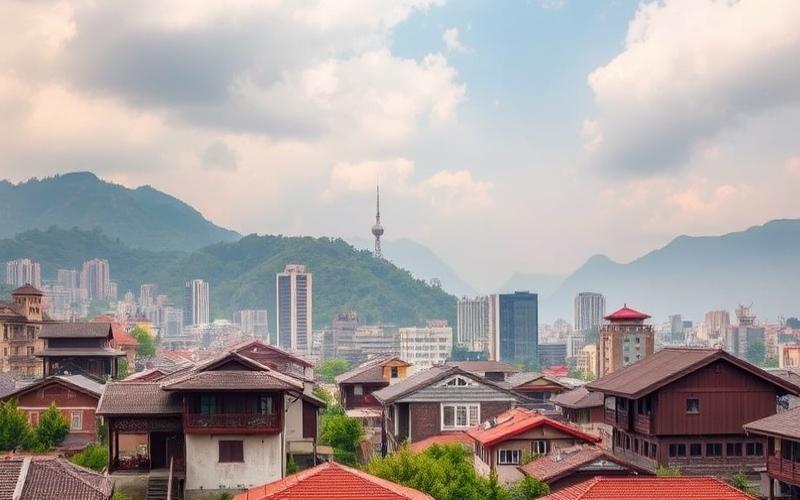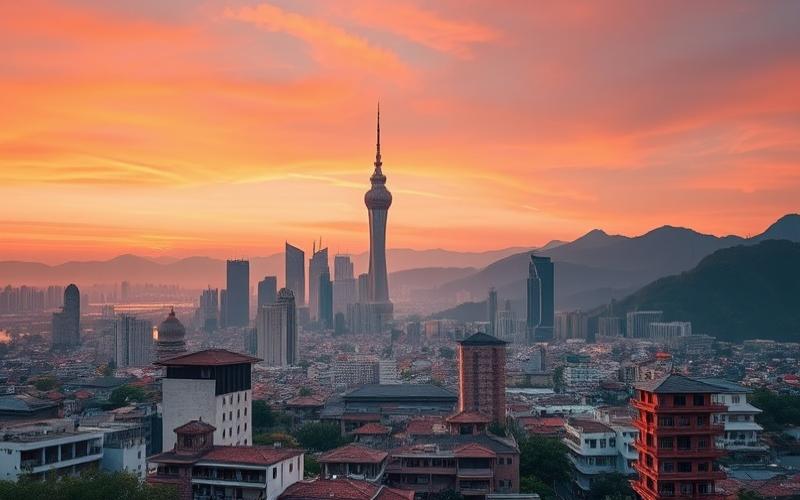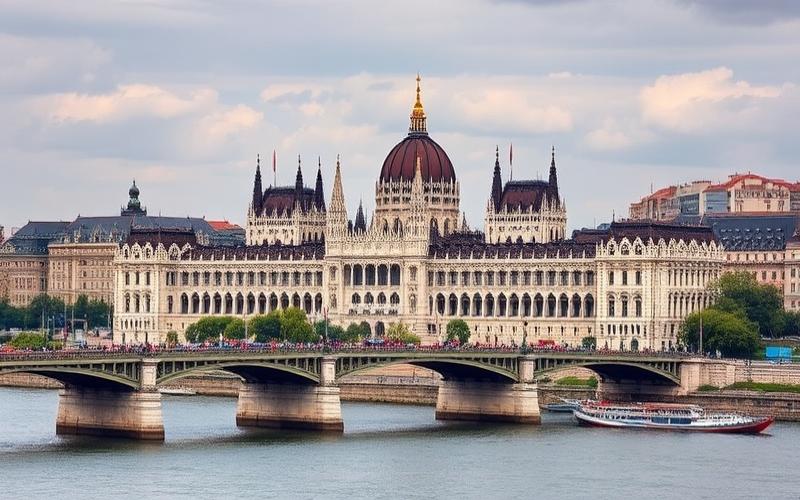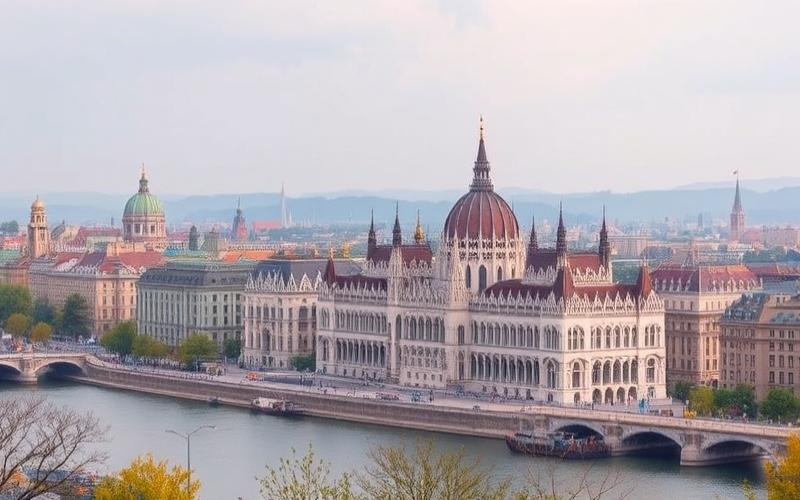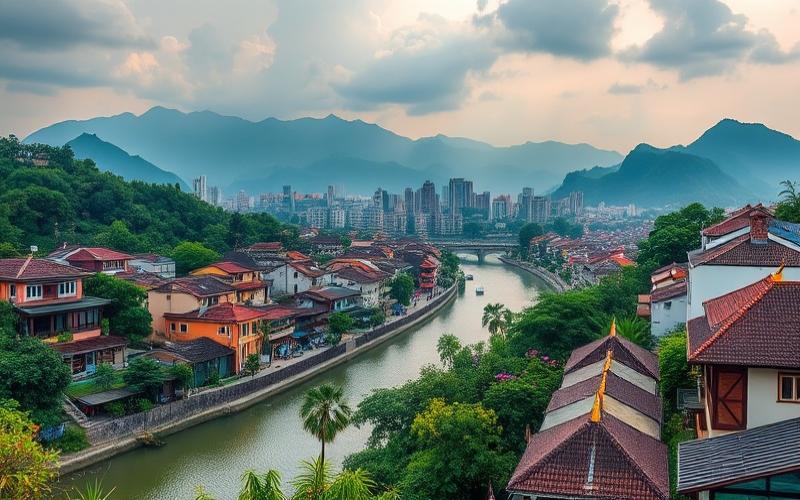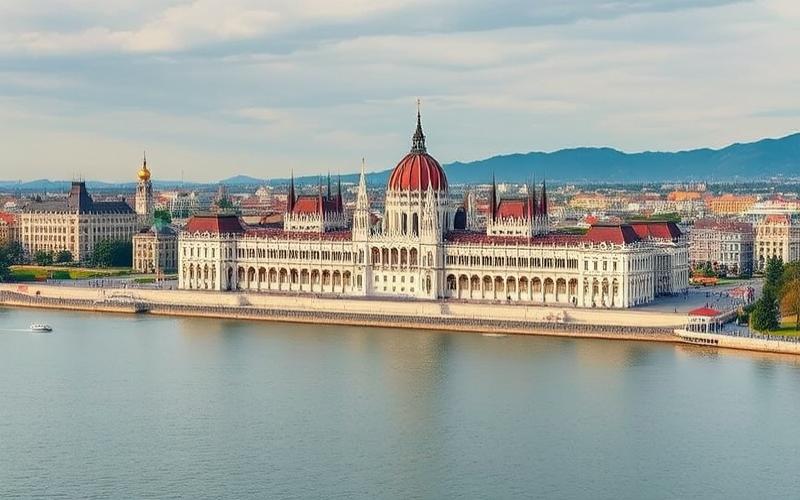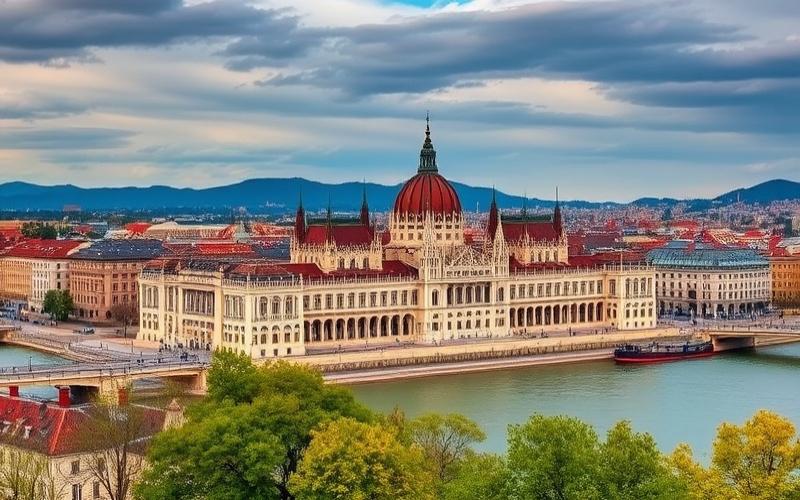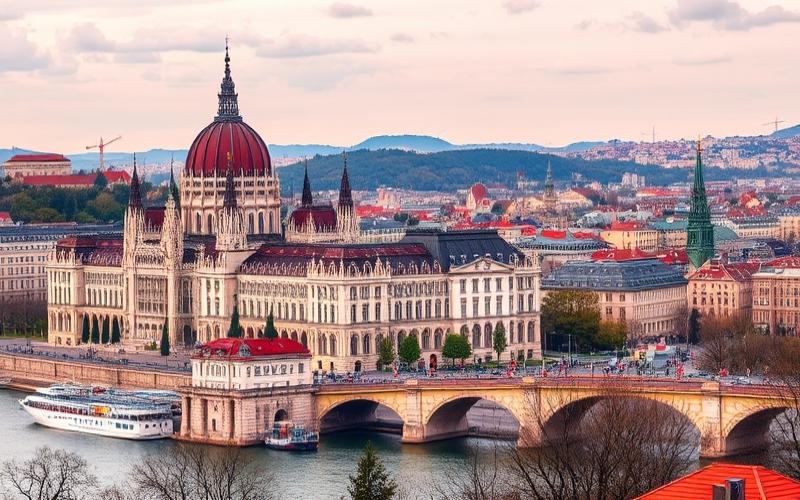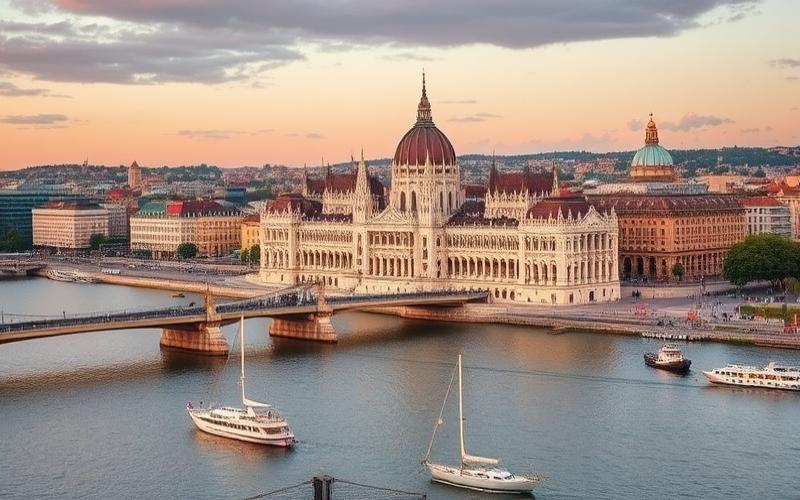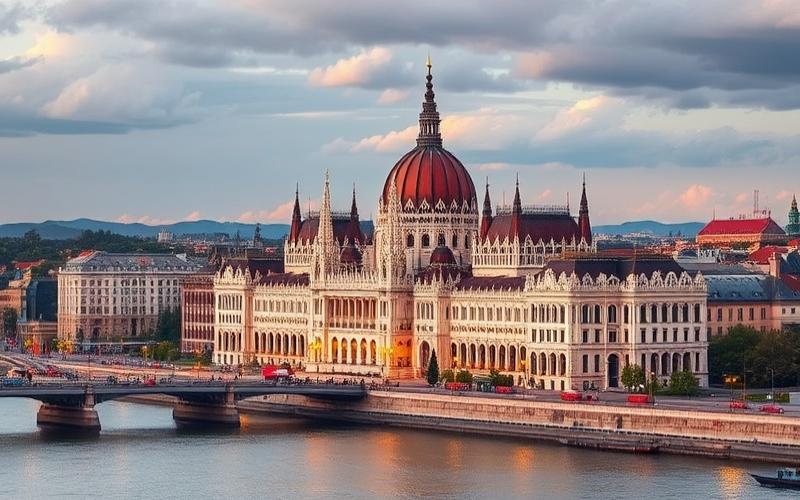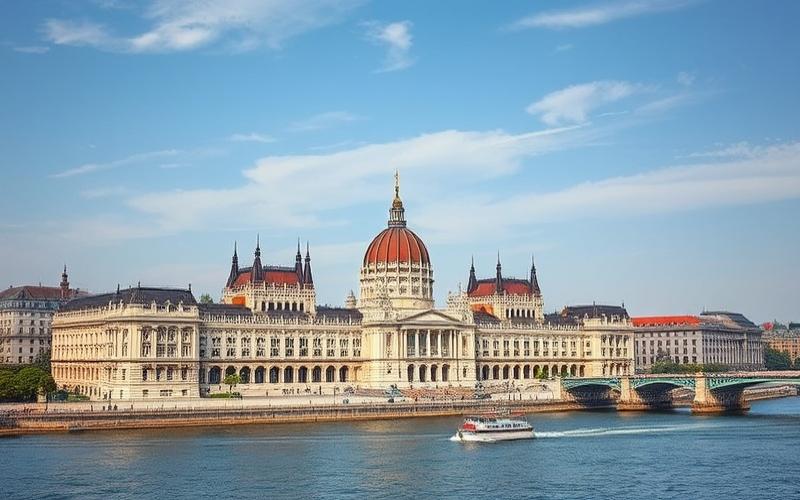
 Published on and written by Cyril Jarnias
Published on and written by Cyril Jarnias
In the dynamic context of the Hungarian real estate market, a global phenomenon finds particular resonance: “dark stores”. Often located in high-density urban areas, these warehouses invisible to the physical public but omnipresent in the e-commerce scene are transforming the urban and economic landscape.
Within just a few years, the exponential growth of online commerce has propelled these new storage and distribution locations to the heart of real estate concerns, raising crucial questions about urban planning, logistics, and employment.
By exploring the impact and challenges of this trend on Hungarian soil, this article offers a penetrating look at how real estate is adapting and evolving to meet the demands of a rapidly expanding digital economy.
Urban Warehouses: New Trend in Hungary
Definition and Integration of Urban Warehouses in Hungary
Urban warehouses refer to small or medium-sized logistics spaces located near or within city centers, allowing for temporary storage and rapid distribution of goods. In Hungary, this concept fits into a dynamic of urban transformation, particularly in Budapest, where the optimization of logistics infrastructure accompanies the modernization of the urban fabric and the evolution of the real estate market toward mixed-use (residential, offices, light logistics).
Reasons for Rising Popularity
- Changes in consumer habits: Consumers prioritize speed and flexibility in delivery, favoring local purchases and express delivery.
- Growth of online commerce: The development of e-commerce in Hungary has generated increased demand for urban storage points capable of ensuring last-mile delivery.
- Post-pandemic impact: The pandemic accelerated the digitalization of shopping, reinforcing the importance of responsive and flexible urban logistics networks to meet demand volatility.
Common Technological Innovations
- Automated storage systems for small boxes and pallets.
- High-speed conveyors and RFID inventory management solutions.
- Warehouse Management Systems (WMS) integrating AI for flow optimization.
- Software platforms for intelligent delivery route planning and reduced lead times.
Enabled Optimizations:
- Maximization of available urban space.
- Acceleration of order processing.
- Improved inventory traceability and delivery flows.
Role in Economic and Urban Development
- Commercial real estate appreciation: Transformation of former industrial or office buildings into multifunctional urban logistics spaces.
- Creation of skilled jobs in logistics, IT, and real estate management.
- Strengthening urban attractiveness through the integration of modern logistics services in renovated neighborhoods.
Challenges and Controversies
- Impact on urban traffic: Increase in delivery vehicle traffic, risk of congestion in central neighborhoods.
- Regulation of commercial spaces: Debates around authorizing these warehouses in areas traditionally reserved for housing or retail.
- Environmental questions: Need to integrate these infrastructures into a sustainable urban development logic.
Concrete Examples and Statistical Data
| City | Number of Urban Warehouses (2023) | Cumulative Area (m²) | Estimated Economic Impact |
|---|---|---|---|
| Budapest | 35 | 3,200,000 | Strong job creation and rise in logistics rents |
| Veszprém | 4 (merged into 1 modern site) | 5,000 | Increased capacity, advanced automation |
| Győr, Debrecen | 8 | 250,000 | Development of regional hubs |
- In 2022, the production value of industrial and warehouse buildings reached 1,051 billion HUF (3 billion USD).
- Over 4.7 million m² of logistics spaces, with 3.2 million in the Greater Budapest region.
Reflection on the Future and Sustainable Integration
Urban warehouses are expected to continue their expansion in Hungary, driven by the continuous growth of e-commerce and evolving urban lifestyles. Their integration into a sustainable development logic will involve:
- Adoption of soft mobility solutions for deliveries (electric vehicles, cargo bikes).
- Sharing of spaces and flows (shared warehouses, multi-actor hubs).
- Adapted urban regulation to limit traffic impact and preserve quality of life.
Urban warehouses, much like “dark stores,” are thus establishing themselves as major players in the smart and resilient city of tomorrow, provided they are part of a balanced and innovative urban governance.
Good to Know:
Urban warehouses, or “dark stores,” are facilities dedicated to the management and rapid distribution of goods to urban consumers, perfectly integrating into the modern landscape of Hungary, where the rise of online commerce and the pandemic have transformed shopping habits. These warehouses optimize deliveries through technological innovations such as inventory automation and management via advanced software, thus contributing to the economic dynamism of urban centers. Although they stimulate demand for commercial real estate, they pose challenges like increased urban traffic and debates on commercial space regulation. Recent examples show their growing implementation in Budapest and Debrecen, with a notable increase in the number of warehouses and their contribution to the local economy. The future of urban warehouses in Hungary seems promising, subject to thoughtful integration into sustainable urban development to ensure this trend aligns with the broader phenomenon of “dark stores.”
The Rise of Dark Stores in the Hungarian Real Estate Landscape
A dark store is a logistics warehouse closed to the public, dedicated exclusively to preparing and collecting orders from online commerce. Unlike traditional stores open to customers, these are spaces optimized for rapid picking and shipping of products ordered online.
Main Characteristics of Dark Stores:
- Organization similar to a supermarket but without display space
- Use of advanced technologies: preparation robots, automated systems, Warehouse Management Systems (WMS)
- 24/7 operation to meet online demand
- Strategic location near urban centers or in industrial areas
| Characteristics | Traditional Store | Dark Store |
| Public Access | Yes | No |
| Sales Mode | Physical | Online |
| Organization | Customer space + backstore stock | Aisles dedicated to picking/logistics |
| Hours | Adapted to customer traffic | Often 24/7 |
The Rise of Dark Stores Transforms the Hungarian Real Estate Market Through:
- An increase in rental demand for industrial and commercial premises suitable for e-commerce storage and logistics.
- The conversion of former stores or warehouses into dark stores, revitalizing some previously unattractive neighborhoods.
- A direct impact on urban planning: multiplication of micro-logistics hubs in suburbs and sometimes even in densely populated city centers.
The Main Reasons Explaining Their Growing Popularity in Hungary Are:
Economic Advantages
- Real estate costs often lower than premium traditional retail locations
- Stock optimization allowing for faster turnover
Logistical Advantages
- Increased speed to prepare and deliver orders (express delivery possible)
- Automation facilitating the processing of large volumes
Response to New Consumer Expectations
- Growth of quick commerce (deliveries in less than 15 minutes)
- Continuous rise in e-commerce adoption rate post-pandemic
- Massive investments by local and international companies
Potential Impact on Local Commerce and Employment:
Possible Negative Effects
- Increased competition against small physical stores struggling with the speed/prices offered by these platforms
- Risk of commercial desertification in some shopping streets
Potential Positive Effects
- Creation of new jobs related to picking-logistics-delivery, although these are often more precarious than those generated by classic retail
Concrete Examples in Hungary:
Companies like Kifli.hu (Rohlik group), Foodora, or Bolt Market have opened several dark stores mainly in Budapest but also in Debrecen, Szeged, or Győr. In Budapest, particularly strong densification is observed around the historic city center and near major roadways enabling ultra-fast distribution to different districts.
Recent Statistics (2024):
- The total estimated number of active dark stores now exceeds twenty in Budapest alone
- The segment has experienced annual growth exceeding 35% since 2021 according to several industry studies
Future Perspectives:
The trend is expected to continue with the ongoing expansion of online grocery commerce. Operators are also investing in more automation to further improve their operational efficiency. Development toward hybrid models combining physical pickup points/optimized dark stores is anticipated, as well as expansion outside Budapest through gradual networking to secondary cities.
The accelerated development of dark stores is durably modifying the Hungarian real estate landscape while profoundly redesigning urban commercial flows.
Good to Know:
Dark stores, warehouses intended for the exclusive preparation of online orders, are transforming the Hungarian real estate landscape by increasing rental demand for suitable spaces in urban areas, often in previously residential or commercial neighborhoods. Their popularity is fueled by the logistical efficiency and cost savings they bring to online commerce companies, including giants like Tesco and Auchan, which have multiplied these installations in Budapest and Debrecen. This phenomenon poses a risk for small retail stores, potentially disadvantaged by the delivery speed of dark stores, but simultaneously boosts local employment in logistics. Recent studies show double-digit annual growth for this segment, with players planning to double openings within five years, suggesting intensifying competition for urban real estate space and continuous transformation of neighborhoods into modern distribution centers.
The Impact of Last-Mile Logistics on the Real Estate Market
The rise of rapid delivery services in Hungary, driven by e-commerce development and changing consumer habits, strongly stimulates demand for storage and distribution spaces located immediately near urban centers. This phenomenon is particularly marked in large cities like Budapest, where logistics players seek strategic locations to optimize the last mile.
Main Impacts on the Real Estate Market:
- Increased demand for urban logistics real estate
- Operators prioritize:
- Compact warehouses on urban outskirts (5,000 to 15,000 m²)
- Smaller distribution centers within the urban fabric itself (500 to 5,000 m²)
- Micro-hubs (“logistics spaces”) under 500 m² dedicated to ultra-local deliveries
- Operators prioritize:
- Accelerated emergence of “dark stores”
- These storage points without customer service serve exclusively for rapid processing of online orders.
- In the Hungarian urban environment, notably Budapest:
- Multiplication of adaptable locations in mixed neighborhoods
- Frequent reuse of vacant or underutilized commercial spaces
Major Trends Related to Dark Stores
- Increase in the number of premises converted into “dark stores”
- Increased pressure on traditional commercial real estate supply
- Progressive regulatory adaptation by local authorities
- Opportunities for investors in acquiring/converting existing assets
Effects on Prices and Real Estate Dynamics:
| Sector | Observed Trend |
|---|---|
| Urban logistics | Continuous rise in rents/values |
| Traditional commercial | Competitive pressure/relative decline |
| Peripheral residential | Increased valuation |
Commercial real estate prices show notable growth near logistics corridors, while residential sees its valuation increase in some sought-after suburban areas by those seeking larger or greener spaces. Occasional saturation in some tourist neighborhoods locally slows this dynamic.
Challenges Encountered:
- Partial saturation or even shortage of available land near the city center
- Competition between traditional commercial uses and new logistics needs
- Need to rapidly adapt infrastructure (roads, power supply, vehicle flow management)
Opportunities Offered:
Good to Know:
Institutional investors show growing interest in this segment deemed resilient and promising. The flexibility offered by new logistics models allows for attractive diversification of real estate portfolios, while meeting increasing demands related to urban speed and efficiency.
Challenges vs Opportunities Related to Logistics Evolution
| Challenges | Opportunities |
|---|---|
| Land shortage | Increased valuation of well-located assets |
| Pressure on existing infrastructure | Accelerated network modernization |
| Regulatory complexity | New innovative real estate products |
In summary, the accelerated transformation induced by last-mile delivery is profoundly shaping the Hungarian real estate market: it redefines the strategic location of commercial/logistics assets while generating both tensions and new perspectives for savvy investors.
Good to Know:
The rise of rapid delivery services in Hungary has intensified demand for storage and distribution spaces close to urban centers, significantly influencing the commercial real estate market, particularly in Budapest. “Dark stores,” these warehouses serving exclusively online orders, are multiplying in large cities, putting increased pressure on existing infrastructure and changing real estate investor preferences, who are increasingly turning toward these growth opportunities. This trend accentuates the rise in commercial real estate prices, while residential real estate faces increased gentrification in areas most coveted for last-mile logistics. Despite challenges, such as increased traffic and the need for adapted infrastructure, these evolutions offer major opportunities for developers ready to align with new logistics expectations and rethink space organization in this rapidly changing context.
E-commerce Investment and Urban Transformation
Definition of Dark Stores and Their Role in E-commerce
Dark stores are urban logistics warehouses that resemble small supermarkets but are not accessible to the public. Their sole function is the rapid preparation of orders placed online, mainly for home delivery or “click and collect.” The main characteristics of dark stores:
- Strategic location in urban centers or dense suburbs to guarantee proximity to customers and optimize delivery speed (generally 10 to 15 minutes).
- Operation as a warehouse with shelving similar to a classic store, but reserved exclusively for order pickers.
- Entirely digital interface: orders are placed via a mobile application.
- Complete absence of physical customer reception.
| Characteristic | Dark Store | Traditional Store |
|---|---|---|
| Customer Access | No | Yes |
| Main Function | Preparation/Delivery | Direct Sales |
| Location | Urban/Dense Suburb | Variable |
| Typical Area | 100–300 m² (often) | Highly Variable |
Influence of E-commerce on Real Estate Development in Hungary
The rapid growth of e-commerce in Hungary stimulates the implementation of new types of urban real estate assets: dark stores and other micro-logistics warehouses. These structures often replace or transform former traditional stores, garages, vacant premises, or even basements at the foot of residential buildings.
Main effects on real estate development:
- Requalification of obsolete commercial surfaces to meet logistics needs related to electronic commerce.
- Increased demand for locations easily accessible by bike/scooter in densely populated neighborhoods.
- Increased pressure on certain real estate segments (e.g., former small converted stores), modifying local supply and demand.
Impact on Residential and Commercial Neighborhoods
The growing installation of dark stores has several direct consequences:
Residential Neighborhoods
- Regular appearance of comings and goings related to delivery personnel (bikes/scooters), sometimes sources of noise or visual nuisance.
- Potential modifications to the local social fabric if some ground floors become inaccessible to the public.
Commercial Neighborhoods
- Possible decrease in traditional pedestrian flow in front of some storefronts transformed into closed spaces dedicated solely to logistics.
List of potential impacts:
- Change in premises usage
- Modification of the visible commercial landscape
- Increased risks of urban artificialization
Challenges Related to Urban Logistics
Major challenges concern:
Traffic
Significant increase in bicycle/motorized traffic related to rapid deliveries around areas served by dark stores. This can generate occasional congestion or usage conflicts with traditional residents/pedestrians.
Existing Infrastructure
Necessary adaptation—or even saturation—of secondary road networks, parking/collective housing not initially planned for this type of intense incoming/outgoing flow.
Synthetic list:
- Local intensification of light motorized/bicycle traffic
- Increased need for temporary “minute delivery” spaces
- Possible accelerated wear on roads/local technical areas
Potential Implications on Real Estate Prices & Urban Reconfiguration
The massive arrival of these centers can cause:
- Localized rise in rents/commercial transactions in some sought-after zones near major axes/densely occupied housing
- Progressive evolution toward increased functional polarization: specialized neighborhoods hosting more of these hybrid distribution-logistics infrastructures
This potentially contributes to redesigning Hungarian urbanism along two major axes:
- Increased valuation around strategic poles quickly served by these services,
- Relative reduction or even temporary commercial marginalization elsewhere if traditional commerce struggles against digitized quick commerce.
Important Framed Text
The meteoric rise of e-commerce is durably transforming the Hungarian urban spatial organization: it favors the discreet but influential emergence of a new hybrid real estate category that disrupts both the classic commercial and residential landscape while raising questions about the future sharing of urban uses and their overall socio-economic impact.
Good to Know:
“Dark stores,” warehouses dedicated to preparing online orders, play an essential role in the rise of e-commerce in Hungary by enabling faster and more efficient logistics. This trend impacts real estate development, as many urban spaces, often formerly commercial or industrial, are transforming to host these new infrastructures. This can lead to a revaluation of real estate prices and modify neighborhood balance, particularly with the potential increase in traffic and pressure on existing infrastructure. Residential and commercial areas must adapt, which could redesign the urban landscape, sometimes increasing congestion while stimulating the local economy through job creation.
Disclaimer: The information provided on this website is for informational purposes only and does not constitute financial, legal, or professional advice. We encourage you to consult qualified experts before making any investment, real estate, or expatriation decisions. Although we strive to maintain up-to-date and accurate information, we do not guarantee the completeness, accuracy, or timeliness of the proposed content. As investment and expatriation involve risks, we disclaim any liability for potential losses or damages arising from the use of this site. Your use of this site confirms your acceptance of these terms and your understanding of the associated risks.






